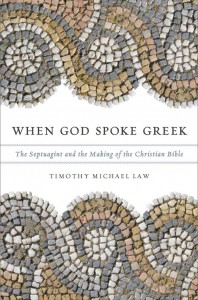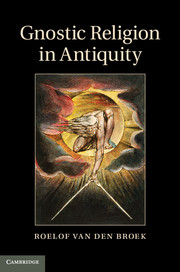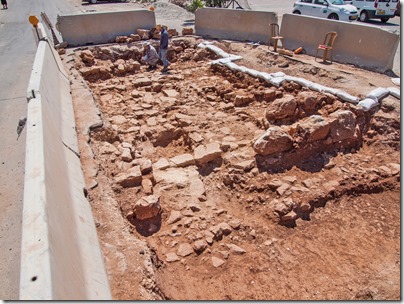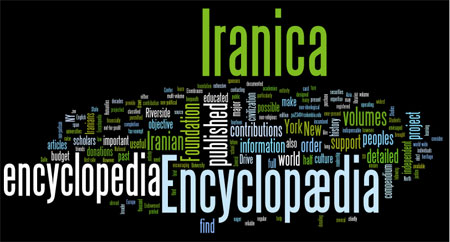John Ma deconstructs the Maccabean History
The Seleucid king Antiochus IV persecuted the Jews, prohibited Judaism, and profaned the Temple. Pious Jews revolted under the leadership of a priestly family from Modein. First Mattathias, then Judas Maccabaeus led the insurgents. After resounding victories, Judas freed and rededicated the Temple.

Attavante, Martirio dei sette fratelli ebrei
These are the putative events of 167-164 BCE, known primarily through the pseudo-prophetic work of Daniel, and through the two much later historiographical accounts conventionally described as the First and Second Books of the Maccabees. The story is puzzling from an historical point of view. The Seleucid rulers, like other Hellenistic sovereigns, followed the Achaemenid model of negotiation with local communities or elites. They struck bargains: in exchange for acquiescence in rule – in the form of political control and taxation – they guaranteed the continuity of local rights and practices. A religious persecution targeting a particular group is unparalleled.
At Jerusalem a royal edict explicitly attests this model. The much later Jewish historian and apologist Josephus reliably preserves the record: when the Seleucid ruler Antiochus III conquered Phoenicia and Coele-Syria (the southern Levant) in 200 BCE, the local priestly elites formally received him at Jerusalem. To thank the Jewish community for rallying to the Seleucids, the king gave them various fiscal privileges and gifts. More importantly he granted them the right to live as a political community according to its ancestral laws. As recognized by the great scholar of Hellenistic history and Judaism, Elias Bickerman (1897-1981), these ancestral laws likely included the Mosaic-Ezraic religious laws that governed the life of the Jewish community in and around Jerusalem. Royal power backed local arrangements. This was a typical situation, one that had obtained – at least in theory – since the promulgation of the Torah by Achaemenid rulers in the fifth century. In view of this situation, Bickerman had formed the bold hypothesis that the persecution by the Seleucid state was in fact the result of petition by “modernizing” Jewish elites – anti-Ezra figures, keen to break down the traditional barriers between Jews and non-Jews, and to integrate.
Bickerman did not conjure up these figures out of thin air. A generation after Antiochus III, Jerusalem became the site of a Greek-style polis, Antiocheia, founded by local elements with royal backing. The two Maccabean narratives describe the event indignantly, and a recently discovered inscription from Asia Minor provides further context. The inscription records that Eumenes II, ruler of the Hellenistic Attalid dynasty, granted polis-status to a local community, Toriaion. In both the Maccabean narratives and the Toriaieite inscription, we can observe local initiative and the central role of the gymnasion in constituting a citizen body. The new Antiocheia likely existed side-by-side with the older Jewish community and its shrine, with certain elite elements both citizens of Antiocheia and priests in Jerusalem.
Local rights meant local governance and acknowledgement by the Seleucid state. But it did not mean full autonomy. The episode under Seleucus IV in 2 Maccabees shows that the Temple at Jerusalem was subject to direct administrative control: the chief-minister Heliodorus wished to inspect Temple finances upon the report that a surplus from royal subsidies had accumulated. (The inspection was thwarted by a divine intervention.) Fiscal control of local shrines was a very visible and high-impact aspect of royal administration, which also took the form of regular subventions and patronage. In Asia Minor, under Antiochus III all local shrines were supervised by a high priest entrusted with implementing the pious care that the king had for local rites and shrines. His supervision also took the form of the oversight over shrine finances and administration.
※
A sensational inscription now in the Israel Museum – and recently published by Hannah Cotton and Michael Wörrle (with additions by Dov Gera and C.P. Jones) – explicitly attests this religious supervision for Coele-Syria and Phoenicia, the province to which Jerusalem belonged. A large stone slab, set up in the main shrine in the Idumean city Maresha, bore the letter of appointment of (probably) the high priest:
King Seleucus to Heliodorus his brother, greetings. Taking the greatest care of the safety of our subjects, and thinking it the greatest good for our affairs, when the inhabitants of the kingdom go about their lives without fear, and seeing that nothing can partake of the fitting happiness without the good disposition of the gods, we have from the start made it our policy that the shrines established in the other satrapies should receive the ancestral honors with the befitting care, but since the affairs in Coele-Syria and Phoenicia do not benefit from an appointed official for the care of these matters, we have taken thought that Olympiodorus should take care of the good order of the shrines, since he has shown us the trustworthiness of his understanding (?) from earlier times onwards; for having grown up with us and contributed the best disposition in all matters, he was duly placed in charge of the bedroom, having appeared worthy of such a great trust, and he was rightly appointed to the First Friends; having attained such a position of [trust ?] and paid attention to the fact that we are disposed towards the increase of the gods’ honors … for which reason we are convinced…
It is even possible that the Olympiodorus in this inscription is the Heliodorus of the story remembered in 2 Maccabees. The similarity of the names would have encouraged the transposition of the inspection from the religious official to the more prestigious chief-minister Heliodorus.
The royal edict of Antiochus III concerning the rights of the Jews, the narrative of administrative interference in the finances of the Temple, the foundation of Antiocheia in light of the institution of Toriaion as a polis, and the appointment of Olympiodorus provide intersecting angles on the situation of the Jewish community under the Seleucids – all from the viewpoint of administrative history.
※
Administrative history helps us make sense of the “persecution” of the Jews in the years 168-164. The parallels suggest a plausible reconstruction of two events. There was no persecution of the Jews but a series of administrative measures in the aftermath of rebellion, real or perceived, at Jerusalem. The “paper trail” of documents quoted in 2 Maccabees strongly indicates that an uprising under Judas Maccabaeus did not free the Temple. It was rather the action of the high priest Menelaus.
The arguments related to the first hypothesis are a complex of suggestive indications and possibilities based on the events of 168. The Jewish community certainly lost its rights as a punishment for rebellion, or unrest perceived as rebellion. This is explicitly mentioned in 2 Maccabees, and comparable punishments are well known in ancient history. The Jewish community also lost the Temple as part of this punishment, a measure explicitly attested by Hellenistic documents that mention how the reversal of punishment entailed the recovery of shrines as well as liberty.
Recovery means previous loss. The island polis of Mytilene was punished for rebellion by being deprived of their self-governance and losing control of their shrines. The same fate befell the Jewish community. To punish their disloyalty, the Seleucid state stripped them of self-governance, the enjoyment of the local laws that Antiochus III had guaranteed, and control of the shrine (i.e., the Temple at Jerusalem).
What happened when a city “lost” its shrines and its territory, along with its liberty? The answer is not completely clear. We can narrow down the possibilities: confiscation, direct administration, or alienation. The city of Mytilene probably became ager publicus, the direct property of the Roman Republic, until the decision was reversed. In the case of Jerusalem, the Temple may have been transferred to another community. This was almost certainly Antiocheia. The Greek city already existed in Jerusalem but was now reorganized and re-founded. Antiocheia received new laws (settled by a special law-giver, one “Geron the Athenian”) and fortifications, and a growing citizen body due to the influx of non-Jewish settlers. We might call this city “Antiocheia 2.0.”
The “re-foundation by gathering” is a phenomenon known from many other examples in the Hellenistic world, under the technical term of “synecism.” The Temple dedicated to Yahweh became the center of the colonists’ own cultic life, built on the cult of Zeus. It now hosted festivals and sacrifices for (and perhaps to) the king and reflected the normal dynastic-centered religious life of a royal city. This is the “abomination of the desolation” of the Maccabean sources. The term might designate, in its concreteness, cultic installations that the colonists built in the Temple.
※
What happened to the Jews? Their fate can be reconstructed with the help of clues from 1 and 2 Maccabees. When they lost their autonomy as a community, they were probably integrated into the new city, Antiocheia. Some of the elites became full citizens, but the majority were subordinate lesser members – laoi or paroikoi (serfs or “dwellers-around”), paying rent and taxes to the citizens of the new city, living in the town and in villages around the urban center. This sort of shuffling of status, and redrawing of boundaries, is typical of Hellenistic synecism. As paroikoi, the Jews did not have their own corporate existence and institutions but were directly subject to the decrees and the laws of the Greek city. The interdiction to call oneself “Jew” (2 Maccabees 6.6), which is comparable to the disappearance of the ethnikon in cities that have been synecized or attributed, demonstrates their position. Elsewhere, when the city of Delos was given to the Athenians, the name “Delian” disappeared.
The synecism was broader than just the punishment of a supposedly rebellious local community of middling importance. It was part of an administrative reorganization of the region, the creation of a new royal city, this time by direct royal foundation rather than by local initiative, and with a considerable territory: this is shown by the fact that the Samaritans (as we can see from a petition preserved in Josephus) argued that they were not Jews – not only to avoid the interdiction of religious practice but also to avoid integration within the large territory of the new Seleucid foundation.
The legal subordination of the Jews to the new city, and their administrative integration within it, is also shown by the compulsory wearing of crowns and participation in civic festivals (as well as the monthly ruler-cult sacrifice), and the obligatory building of ruler-cult altars in front of houses – all features that 1 and 2 Maccabees complain about bitterly. These are not specifically anti-Jewish measures but standard cultic gestures within a Greek polis that the civic community imposes on the community within its boundaries: citizens, resident foreigners, and paroikoi – a serious matter of civic visibility and harmony. The inscribed records of the Hellenistic poleis abundantly attest such measures. The Jews had to follow these laws because they were part of the new city.
The concomitant factor of the loss of the political rights the Seleucid charter once granted was the withdrawal of state support for the local “laws” of the Jews, namely the Mosaic-Ezraic religious rules. The Seleucid state had once authorized and guaranteed the laws of this loyal community in the empire, and the government rewarded them with rights and subsidies. Now that the Jewish community lost its political privileges as punishment for perceived disloyalty, the right to practice the Mosaic Law was withdrawn.
Parallels from the history of Hellenistic kingdoms help us to see the form that the so-called “interdiction of Jewish cult” took: there was no edict of interdiction. Interdiction was the by-product of several factors: administrative measures; the loss of self-governance, laws, and shrines as punishment for revolt; and integration within a royal city as part of a synecism, and within the royal city’s religious and civic culture of festivals and the ruler cult. The “abomination of the desolation,” the interdiction of the Mosaic Law, and the obligation to participate in “pagan” cult were matters of administrative history. They were not religious.
※
The authors of 1-2 Maccabees would have us believe that the rebels’ stunning success in the Maccabean revolt included not only military victories against ever larger Seleucid forces but also the recapture and rededication of the Temple and the reversal of the royal decisions. But four letters preserved in 2 Maccabees 11:16-38, which supposedly record this change, tell a surprising, and revealing, story.
Probably upon the death of Antiochus IV in Persia in the autumn of 164, the Jews in Jerusalem, though not recognized formally as a self-governing local state, presented a petition to the Seleucid governor Lysias. Some elements in the petition were granted by Lysias, others passed on to the new king, the boy Antiochus V. The procedure is attested elsewhere, confirming the authenticity of the letters. This is the first letter, addressed to the plethos (population) of the Jews, and ending with a “contract clause,” the promise of further benefactions in return for loyalty. Contrary to the usual interpretation (by the Hellenistic historian and epigraphist C. Habicht), this letter was not addressed to the rebel Maccabees: the tone is too mild, and the plethos must be the whole community of the Jews. The fourth letter, a document issued by Roman diplomats in the region, confirms this interpretation. It notes the letter of Lysias as being addressed to the whole populus (people) of the Jews. The peculiar expression plethos can be explained easily: after the synecism the Seleucid state did not recognize any rights or institutions of the Jews.
In the second letter, the boy-king replied to Lysias, restoring the Temple to the Jews and reinstating their laws and customs. This type of correspondence – in which royal decisions were not communicated directly to local communities but first to royal administrators with copies to the locals – is completely normal, a feature which confirms authenticity. The third letter, written by Antiochus V after an interview with the high-priest Menelaus, confirmed the restoration and granted amnesty. It is no longer addressed to the plethos, but duly speaks to the reinstated community and its institutions.
The dossier of letters from Toriaion provides a parallel. In response to a petition, the Attalid Eumenes II writes to the inhabitants of Toriaion, calling them katoikoi (inhabitants), since they do not have recognized political institutions. But once he has granted them polis status, the king addresses them as the council and the people of the Toriaeitai, since the king and state apparatus now acknowledge – and indeed have created – their institutions.
How did these four letters survive? Since they contain a crucial series of documents involving the grant of rights back to the Jewish community, they were kept in the high priest’s archive, as precious legal documents, held until they fell into the control of the Maccabean faction when Jonathan was named high priest.
But read palimpsestically, against the grain of the Maccabean narrative, they tell a non-Maccabean story. The punishments of the Jewish community by deprivation of political rights and autonomy, the synecism, the loss of the Temple – all of these measures were reversed. The group of Jews who made the petition was almost certainly in the company of the high priest Menelaus, a villain in the Maccabean sources. The four letters astoundingly suggest that the Temple was restored and rededicated not by Judas Maccabaeus, but by Menelaus.
※
What place does this leave for the Maccabean revolt? The Hasmonean dynasty could have promoted the tale of Judas’s rededication of the Temple. They had emerged from the undoubted successes of a Maccabean group, embedding their power and incrementally creating an independent entity during the dynastic turmoil of later Seleucid history (a process gleefully recorded in 1 Maccabees). Could the whole narrative of military rebellion and success under Judas Maccabaeus have been a later embellishment? Could it have been written to provide the Hasmoneans with a legitimizing warrior narrative?
At the supposed time of the victories of Judas Maccabaeus, the Seleucid state was making a major military demonstration at Daphne and preparing for a major Eastern expedition (the expedition against the Parthians, where Antiochos IV would lose his life). There was clearly some form of unrest. The Maccabean group could have been only one among many actors in processes of unrest or negotiation; it is equally possible that they only emerged later, during the Seleucid dynastic turmoil.
In the interpretation proposed above, the high priest and his faction, the so-called “Hellenizers,” play the main role. After Antiochus IV died in Persia, the Hellenizers in Jerusalem recovered the Temple. Negotiating within the parameters of Hellenistic practice made it feasible for the Seleucid state to return the Temple officially. The Hellenizers also responded to the presence of a Roman embassy by making sure that the Romans were aware of their existence as a potential problem for the Seleucid state. Finally, they negotiated an amnesty to cover all the Jews, not only the priestly elites.
All these concessions ultimately took place at the price of the high priest’s life: the Seleucid state executed him, perhaps as punishment for failure to guarantee order in the continual unrest. The high-priest Menelaus in this scenario was not the anti-Ezra that Bickerman thought. Rather, he emerges as a local benefactor and leader of a type well known from other Hellenistic communities – and a true hero.
※
The advantages of the shift to administrative history are perhaps immediately obvious: a gain in precision of description, and the ability to explain the “persecution,” hitherto baffling. But focusing on state processes also entails a series of losses. The first loss is perhaps the narrowing of the definition of the political (as Paula Frederiksen pointed out to me): that there was no “religious persecution” does not evacuate the religious dimension of the events. In a world full of gods, synecism had religious consequences. This religious dimension might have been the stronger, and the more political, for having taken place during years when the Seleucid empire was affirming itself (after a notable rebuff in Egypt in the face of the Roman Republic) militarily. The king’s success and the subjects’ welfare would be intimately linked to the kingdom’s piety.
A second loss is low sensitivity to historiographical tone when mining the Maccabean narratives for nuggets of fact. The positivist approach, apart from theoretical methodological problems (involved in cherry-picking “facts” out of complex texts), risks mistaking literary topoi and culturally meaningful schemes for raw facts. Sylvie Honigman forcefully pointed this out to me. Her current work on the Maccabean sources, based on historiographical readings, will produce results even more radical than those sketched out here. The Maccabean narratives combined precise administrative details, authentic documents, outright forgeries, and culturally meaningful rewriting: the challenge is deciding how to read these texts, as well as how to take them apart.
A widely shared and felt response to the theses presented above has centered around two main points. The first was a reluctance to admit wholesale invention of a narrative of rebellion and victory, especially in view of concordant details in both Maccabean sources. My argument about the Seleucid state being fully mobilized in these years could be flipped: the military preparations for a major expedition eastwards might have precisely provided the circumstances for local unrest and rebellion. Moreover, the paper trail implies that the Temple was graciously returned to the most acceptable party in the Jewish community; but the paper trail might lie or dissimulate a story of Seleucid weakness. It would thus purport to show the Seleucid king making a gracious grant, in the face of realities he no longer controlled. Here we lack external evidence to judge what work both parties are doing in the negotiation. In my view the paper trail is what allows us to correct the later legitimizing narratives of the Hasmoneans. Yet an alternative is that the Maccabean narratives contain authentic memories of successful resistance that nullify the official transcript contained in the documents. The whole complex of administrative evidence adduced above might be reconfigured to produce such an interpretation.
The second, connected point was that the focus on administrative history (from the points of view of Hellenistic state practice and polis institutions) might make sense of the forms taken, but does not preclude specific persecutory intention directed against the Jews (and indeed minimizes it or writes it away). The interdiction of circumcision and of dietary laws, and the mention, in the letters of Antiochus V, of a “shift to Greek customs,” the permission for the Jews to return to their life customs (diaitemata) – these might imply measures targeted against the Jews. Later Greek sources (e.g., Posidonius, reproduced in Diodorus) seem to imply such measures (and indeed, are framed in terms of hostility against the Jews).
On the other hand, these later sources might be reactions to Hasmonean self-presentation and expansion. The “interdiction” of Jewish customs can be explained administratively, as the consequences of the suppression of Jewish autonomy and rights. Further factors might have complicated the implementation of measures in the aftermath of rebellion: religious aspects of synecism, enforced religious activity and resistance to such compulsion, the religious and political preferences of Antiochus IV himself. Or, perhaps, the whole issue of “suppression of rights” should be revisited from the point of view of culturally loaded narratives (as Honigman proposes to do).
None of this is to readmit the possibility of persecution. It is to accept the point that a state-focused history of the administrative measures must be embedded in a much larger and richer political, religious, and, generally, cultural history.
Author’s Note:
I present my ideas, with further argument and references, in two articles, “Relire les institutions des Séleucides de Bikerman,” in S. Benoist (ed.), Rome, a City and its Empire in Perspective: The Impact of the Roman World through Fergus Millar’s research (Leiden 2012), 59-84; and “Notes on the Restoration of the Temple,” forthcoming in R. Oetjen, F. X. Ryan (eds), Seleukeia: Studies in Seleucid History, Archaeology and Numismatics in Honor of Getzel M. Cohen.
On the Maccabees, the bibliography is immense; see e.g., E. Bickermann, Der Gott der Makkabäer: Untersuchung über Sinn und Ursprung der Makkabäischen Erhebung (Berlin 1937); F. Millar, “The Background to the Maccabean Revolution: Reflections on Martin Hengel’s ‘Judaism and Hellenism,”‘ Journal of Jewish Studies 29 (1978), 1-21; and J. Wilker, “Von Aufstandsführern zur lokalen Elite. Der Aufstieg der Makkabäer,” in B. Dreyer et P. F. Mittag (dir.), Lokale Eliten und hellenistische Könige: zwischen Konfrontation und Kooperation (Berlin 2011), 216-52. Second Maccabees has recently been edited with translation and commentary by D. R. Schwartz (2008) and R. Doran (2012). Antiochos IV and the Maccabees are receiving much renewed interest: see already S. Honigman, “The Religious Persecution as a Narrative Elaboration of a Military Suppression,” forthcoming in M.-F. Baslez, O. Munnich (eds), Autour des livres des Maccabées: la mémoire des persécutions.
The two most important sources, the Toriaion dossier and the Heliodoros dossier, are now republished as Supplementum Epigraphicum Graecum 47.1745 and SEG 57.1838; parallels for the losing and the restoring of shrines after rebellion are found in a decree from an now nameless city in Asia Minor (SEG 2.663) and a statue base of the late Hellenistic benefactor, published by L. Robert, “Théophane de Mytilène à Constantinople,” Comptes Rendus de l’Académie des Inscriptions, 1969, 42-64. On the Achaemenid and Seleucid models of interaction, see P. Briant, From Cyrus to Alexander: A History of the Persian Empire (2002); J. Ma, Antiochos III and the Cities of Western Asia Minor (2002); and L. Capdetrey, Le Pouvoir séleucide: territoire, administration, finances d’un royaume héllenistique (312-129 avant J.C) (2007). The Achaemenid state can be seen validating the religious decision in a local cult in the famous trilingual stele from Xanthos in SW Turkey (in Lykian, Greek and Aramaic): Fouilles de Xanthos 6 (1979); and now P. Briant, “Cités et satrapes dans l’empire achéménide: Xanthos et Pixodaros,” Comptes Rendus de l’Académie des Inscriptions 1998, 305–47. On paroikoi, and generally on the obligations laid on the whole population of a city to participate in its religious life, see L. Robert, “Sur un décret d’Ilion et sur un papyrus concernant des cultes royaux,” in Essays in Honor of C. Bradford Welles (New Haven 1966), 175-211; the very important document Inschriften von Magnesia 100 can be completed with similar texts, for instance J. Crampa, Labraunda 3: The Greek Inscriptions (1969), no. 6A; Supplementum Epigraphicum Graecum 41.1003 II (from Teos); and now M. Wörrle, “Limyra in seleukidischer Hand,” Chiron 41 (2011), 377-415.
The ideas presented here were tried out in Oxford (where they were debated by R. Doran), and in Jerusalem, before members of the Departments of Classics, General History and Jewish History (who were attentive, courteous, and tough). I thank H. Cotton. and N. Hacham for hospitality; and the audience in Jerusalem for their remarks, notably but not exclusively H. Cotton, A. Ecker, G. Finkielsztejn, P. Frederiksen, J. Geiger, N. Hacham, S. Honigman, A. Jakobson, N. Kaye, P. Martzavou, M. Ostwald, D.R. Schwartz, and B. Porten. My thanks to S. Honigman, P. Martzavou, and F. Millar for improving this text.
Much of the material can be found, with text and translation, here.















